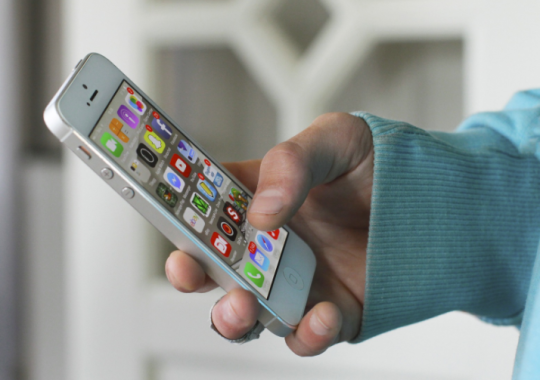
With the continued growth of mobile shopping, more retailers are building out mobile apps to satisfy consumer expectations. But getting a first-time user to install an app isn’t easy — and it can be very costly. Mobile app marketing and retargeting company Liftoff analyzed user data for a year, and found that the average cost to acquire a user who makes a purchase via an app is $64.96.
The RTP editorial team shares their experiences with mobile apps, and discusses whether it makes sense for retailers to spend as much as they do in this area in the hopes of acquiring new customers.
Debbie Hauss, Editor-in-Chief: I am not convinced that excessive ad spend, projected to total $7.57 billion this year, is the most cost-effective way to acquire loyal, long-term mobile app customers. I think the mobile app effort has to be included as part of a well-thought-out overall brand strategy, one that motivates consumers to download the app because they are true believers in the brand. As a consumer, I do not look forward to using up space on my phone with apps that I might use once because of a specific promotion. I download apps that I know will be valuable to me and make my life easier. That said, most of the apps are not retail apps, they are more lifestyle/service based, such as Lyft, Amtrak and Expedia. More retailers might want to think about trying to partner with those types of brands in order to reach consumers without having to throw billions of dollars into potentially wasted advertising.
Adam Blair, Executive Editor: Brands attempting to acquire mobile app users — much less entice them to make an in-app purchase — are fighting an expensive uphill battle. For one thing, 88% of users’ time on smartphones is spent in just five categories, according to Forrester’s Laura Naparstek: social networks, video and music, messaging, games, and phone tools and utilities. Or as L2’s Scott Galloway said recently as he brandished his smartphone, “This isn’t a phone, it’s a delivery vehicle for Facebook.” Like Debbie, I’m loath to allot precious memory space to an app unless I know I’ll get consistent use out of it. I would agree that spending heavily to recruit mobile app users seems like bad strategy — that is, unless those users are also a retailer’s very best customers. Targeting these heavy-spending VIPs with offers and content that make them feel special would provide a stronger ROI than any sort of mass marketing approach.
Marie Griffin, Managing Editor: I have a short list of mobile apps I use regularly and only two, Amazon and Jet, are retail apps. That makes me typical. According to ChannelAdvisor data, 53% of smartphone users engage with between one and three retail apps in a typical month. Because space in my iPhone memory is precious, I am wary of adding any new apps, but I did recently download the Jet app after a friend recommended I try it. I had seen plenty of digital advertising and received many Jet postcards before that, but that marketing spending didn’t sway me. Word of mouth did. That tells me that retailers must prioritize investments in the experience that underlies the app, such as Jet’s game-like process of lowering prices when a new item is added to the basket, and delighting shoppers with product breadth, or uniqueness, or pricing. Don’t bother pouring advertising dollars into another me-too app.
Klaudia Tirico, Features Editor: I have a huge problem with “mobile-optimized” web sites because while I wouldn’t say my fingers are fat, they are much larger than the average clickable icon on my phone. It’s super annoying to zoom in and have to navigate a web site on a small screen. With that said, I am actually a huge fan of retail mobile apps because they’re just much easier to navigate, but I still prefer to browse and buy on my desktop. Some of my favorite apps include Urban Outfitters (great loyalty program and special offers for app users), Zara (easy to navigate and checkout), Revolve (great curated content) and Wayfair (awesome AR capabilities to view furniture in your own home). However, the projected ad spend seems crazy high and unnecessary, and like Debbie, I don’t believe it is the most cost-effective way to gain mobile app customers. I know I didn’t download an app because of an ad; I downloaded it because I like to shop at specific stores and want to do it as seamlessly as possible.
Glenn Taylor, Senior Editor: Apps account for 71% of mobile sales for retailers who invest in both the mobile site and shopping apps, according to the most recent Criteo Global Commerce Report. With that in mind, I see it being a big money generator for a retailer, as long as it is captivating enough to keep the user engaged. If you’re going to put money in mobile apps, make sure they can integrate with all other experiences to get the most value out of them. The Fanatics app is one of the best mobile retailing experiences I’ve come across, in that it displays all the major sports leagues in big buttons on the front page. You can click on any team and immediately see more big buttons that take you to menswear, womenswear, t-shirts, sweatshirts, hats and jerseys. The images of every product are clear, and when you click an item, it displays big buttons for every size. This is an example of how important clarity and content are in making these apps easily navigable.






